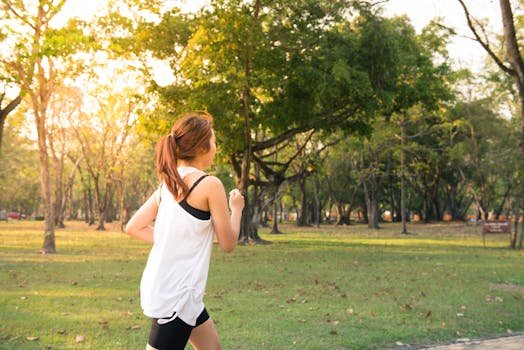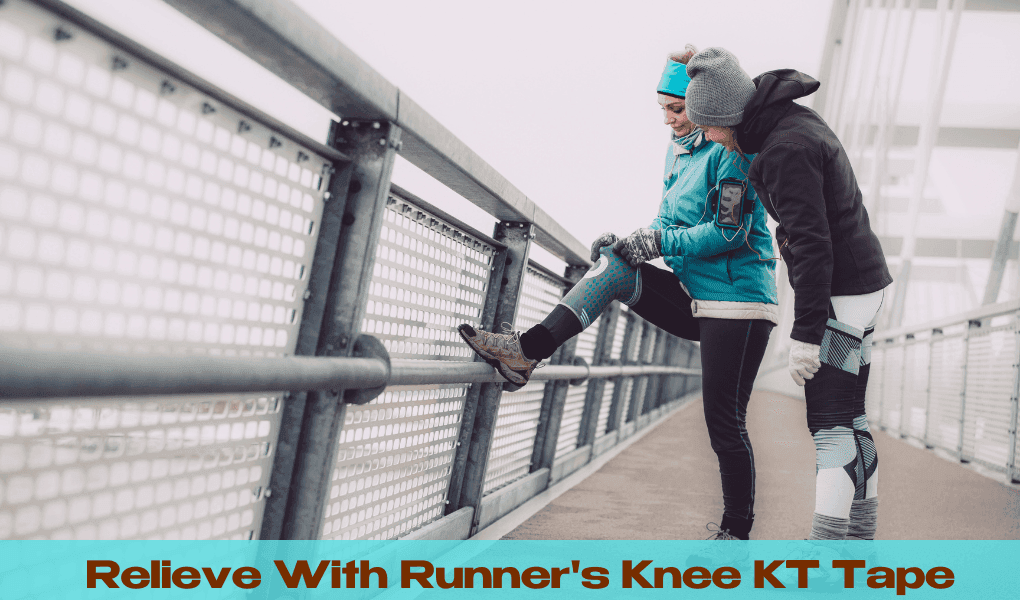
Introduction
In this blog post, we will share essential tips for running in the heat with you to keep you safe and comfortable during your workouts. Learn how to stay hydrated, adjust your pace, and protect yourself from heat-related issues with these expert tips for running in the heat.
Running in the heat can become tedious and dangerous unless done with the right precautions. As the temperature rises, there is an increased likelihood of dehydration, heat-related illnesses, and heat exhaustion, among other ailments, for some internal factors like the psychological needs of people and to be active sometimes in a positive way. However, if you follow the right approach, consider the necessary preparations, and use the right strategies, you will be able to withstand the scorching conditions and stick to your running schedule without endangering yourself or your performance in any way. This – in detail as above – will help you to master 15 Tips for Running in the Heat on how to manage your activity and its intensity in adequate, safe, and comfortable conditions.
The dangers of running in the heat

When running in excessive heat, many dangers loom over your safety and health if you are not ready for them. Below are some of the health risks you may run into.
Dehydration: Combining high physical activities with hot temperatures may cause most people to sweat excessively due to losing fluids and electrolytes. Dehydration is quite detrimental to both physical and mental performance and, in extreme cases, may result in heat-related illnesses such as heat stroke, which is fatal.
Heat Exhaustion: The term irreversible suggests that the body’s systems can no longer sufficiently cool themselves. Dizziness, nausea, headaches, fast heartbeats, and a lot of sweating are symptoms of this condition. If it’s not treated, heat exhaustion may lapse into heat stroke.
Heat Stroke: Among all heat illnesses, this is the most dangerous and becomes life-threatening. It is an equally high core body temperature that one experiences when the body’s temperature-regulating abilities are overcome by exhaustion caused by heat. Symptoms may include disorientation, convulsions, and passing out.
Muscle Cramps: The very often combination of fluid deficit and electrolyte deficiency can lead to painful muscle cramps that further restrict running and increase the chances of injury.
Essential tips for running in the heat
Running in the heat can be challenging, but with the right strategies, you can stay safe and perform at your best. Essential tips for running in the heat include staying well-hydrated before, during, and after your run to prevent dehydration and heat exhaustion. It’s also crucial to adjust your pace and intensity to match the higher temperatures, avoiding the hottest parts of the day whenever possible. Wearing lightweight, moisture-wicking clothing helps keep your body cool while applying sunscreen protects your skin from harmful UV rays. Lastly, listen to your body—if you start feeling dizzy, excessively sweaty, or overheated, it’s important to take a break and cool down.
Choosing the right time to run in the heat
One of the most effective strategies for running in hot weather is to plan your runs during the cooler parts of the day. Here are some tips on choosing the best time to run.
Early Morning: Summer running can be most comfortable and best done before 8 am as this is one of the summer hours when it is still cool and pleasant. Thunderstorms in the early afternoon are commonplace. Thunderstorms during the summer usually lack heat storms and rays. So the body finds it quite easy to have a dysfunctional temperature.
Late Evening: If you are not a person who wakes up early, then it would be best to do your running within the late evening hours, like after seven o’clock p.m. As the day goes down, it also gets cooler, hence better conditions to run in.
Monitor the Weather Forecast: Ensure that you check for any forthcoming climatic changes and adjust your running schedule to such changes. Most of the time, one should avoid running between the hours of eleven and four, which are the hottest of the day, because of the combination of sun and temperatures.
Selecting the best time to go running will enable you to alleviate the effect of the heat and enhance your performance as well as comfort.
Plan Your Route Carefully
When faced with the heat, proper planning of one’s route is critical to prevent any discomfort or even danger. Below are the things that can, therefore, help in doing so.
Seek Shady Areas: As much as possible, follow paths that have wide trees, tall buildings, or some other things to block the sun on the way. If one runs in the sun when temps are high, it can build up heat above the thermal balance of the body regulation, making the temperature hard to regulate
Avoid Busy Roads: Built-up areas with many cars are always heated and full of toxins that are dangerous to health and difficult to cool as well as cool the body. But running in parks, nature trails, or home neighborhoods with little traffic will work better.
Stay Close to Water Sources: Try to choose your route close to water sources, such as the water cooler, any parks with water handouts, or even routes that have a 7-Eleven where you can get water before it’s too late.
Consider Terrain and Elevation: It is better not to run in uphill ‘steep cuts’ or hilly areas because these areas will increase the weight that you have to carry and will hinder your ability to thermoregulate.
Making the right planning decisions can help to avoid sun exposure or direct sunlight, heat, and pollution, as well as dehydration issues, and all those will lead to runs being safer and more pleasurable.
Practice Running in Hot Weather

Looking at the bright side, there would not be a single case of running in hot temperatures unless a particular occasion demands it; then, to acclimatize, you should be conditioning; however, do not exceed running in the heat. Practicing running using heat conditions can be beneficial in the following ways: Among some people, there are conditions they do not want to run in.
Start Slow and Gradually Increase Intensity: Women should start at lower times and lower distances, and in terms of intensities, may also be very soft for when it’s hot, and it will increase in duration as their body adjusts to the heat of the sun. This promotes acclimatization of the body as fewer demands of running in hot weather are posed on the body.
Incorporate Heat Training: Try adding heat training to your program. This can involve running on a treadmill in a hot room or putting on layers of clothing during your runs.
Listen to Your Body: Learn how your body feels about running in heat, especially while racing. As much as you want to get to a cool place, dizziness, nausea, fatigue, and such are not signs that your body will allow you to run any longer.
You can get used to running in the heat by allowing your body to go through hot environments in a controlled manner while considering how it feels, making running in the heat a possibility for you.
Pay Attention to Humidity
Humidity is quite important, and a contributing factor, but comfort and running performance can also be highly influenced by humidity when running in the heat. Due to moisture in the atmosphere, evaporative cooling of the body via sweat becomes less efficient in cases of high humidity.
Therefore, while making a plan for your runs, you should check humidity levels along with the temperature measurements. You will have to make modifications to your pace, hydration, and general expectations of the run, such as if the humidity is high.
Furthermore, you should only train when being made aware of the risks associated with high humidities, which is the possibility of suffering from heat-related illnesses such as exhaustion and stroke, because it restricts the ability of the body to cool down normally. In these instances, it is best to follow your body’s cues and throttle back when necessary.
Adjust Your Expectations
It feels more exhausting when running in the heat than when running in cooler weather. Therefore, it becomes necessary to revise the expectations and the aims so that one does not get disappointed or come to any physical damage. Below are some guidelines to help one in making such adjustments having been caught up with the heat;
Plan for Slow Running: When running in summer, it is advisable to run slowly. This is because Body heating processes will be more intensive as the body will try to cool you down, so do not expect a good performance from me.
Modify Your Intensity: It may help to simplify your approach and avoid contractions that are too hard. It could be wise to include more recovery periods. Some vigorous exercise will put more pressure on your body and make acclimatization difficult.
Be Flexible with Your Training Plan: If working out in hot weather becomes unbearable or you notice anyone suffering from heat-related illness, get ready to change or even cancel the specific workout. It is never wrong to spend more effort to stay safe and healthy.
Managing training in the heat calls for a re-calibration of one’s training goals and an adjustment of the training schedule to not put undue stress on oneself or sustain injuries.
Importance of hydration while running in the heat
When the weather is hot, running subjects the body to fluid and electrolyte loss through excessive sweating, making it imperative to hydrate adequately. The following paragraphs describe various ways in which one can maintain proper hydration.
Hydrate Before Your Run: If you are going out for a run, then water bottles or some sort of drink should also accompany you. Don’t make the mistake of waiting to get thirsty before drinking.
Carry Fluids with You: When sweating during the run, the loss of sodium, potassium, magnesium, and other electrolytes can also be severe, and these can be re-supplied with the help of sports drinks or electrolyte tablets.
Monitor Your Urine Color: You should also be conscious of your urine color, which is also related to your hydration status. Aim for a shade of yellow that is light since a dark yellow, amber, or orange color may be an indication that one has been hydrated.
Weigh Yourself Before and After: Before and after your run, step on a scale to assess fluid loss. Thus, exercise volunteers should also aim to replace any weight they have lost during the run with the intake of fluids.
It is well known that having the right amount of fluids in the body can contribute positively to performance and even prevent episodes of heat-related illness, as well as assist in faster recovery after a hot run.
Dressing appropriately for running in hot weather
Given the right clothing, there could be a big difference in how comfortable and how well one runs in the heat of the day or in general. The following are some of the strategies for coming up with the recommended performance clothing.
Lightweight and breathable Materials: Reduce the amount of greasy food and eat light food, preferably fruit and vegetables, as they assist the body in sweating more efficiently with little exertion. Synthetic fibers, polyester, or moisture-wicking thin fabric materials are more recommended for running than cotton materials because cotton gets soggy and heavy with sweat.
Light Colors: light colors reflect sunlight rather than absorb it, which helps to keep your body temperature lower compared to darker shades. This reflective quality reduces the risk of overheating and helps maintain a more comfortable body temperature, allowing you to run longer and with greater ease. Additionally, light-colored fabrics often have better moisture-wicking properties, which further aid in keeping you dry and cool during intense workouts.
Loose-Fitting Clothing: They should be clothes that are not sultry. For instance, baggy clothes in hot weather are ideal as they allow enough movement and encourage airflow around the body temperature.
Hats and Sunglasses: When it is sunny, wear a lightweight sun hat or visor that is long enough to cover the bald spot and wear sunglasses with UV protection.
Sunscreen: Use broad-spectrum Sunscreen rated SPF30 or above generously on children’s skin to avoid sunburn and risk of skin damage as a result of sun exposure.
By wearing the requisite clothes to guard you from heat, you are enhancing your comfort, shielding yourself from the sun’s harmful rays, and improving your experience in running.
Avoid Running on an Empty Stomach
Heat is likely to raise the energy level that your body requires when running. Thus, you must provide your body with some food during your run. Here are tips on how to run without food:
Pre-Run Snack: An overly filling diet before a run will always be counterproductive. It would be best if you had a small, light snack composed of carbs and some proteins around thirty minutes to an hour before you hit the road. For instance, one may have a banana with a little bit of peanut butter, a granola bar, or whole-grain toast with a hard-boiled egg.
Hydrate and Replenish Electrolytes: In addition to intake of water, consider replacing lost water through sweating with sports drinks or certain foods with electrolytes such as coconut water or banana.
Fuel During Long Runs: If you plan to continue running for a period longer than an hour, ensure that you take in some easily digestible carbs and electrolytes to sustain your energy levels and prevent hitting the wall.
Running on an empty stomach often leads a person toward fatigue as well as dizziness and a higher occurrence of heat-related injuries since the body doesn’t have the required energy to fuel for performance and temperature management.
Stay Off the Black Top
Stay Off the Black Top Tips on Running off Hot Surfaces When the weather is hot, it can be very important to select areas that will not be directly exposed to the radiant heat from the sun. Avoid Running on Hot Surfaces.
Avoid Asphalt and Concrete: These surfaces can be very hot when running due to the sun’s heat. Instead of these surfaces, you should run on a cooler surface like trails, grasses, or dirt paths.
Run in Shaded Areas: Try to pick the route that has lots of trees or buildings to provide shade from the sun’s rays so that there is less sun on the surface.
Time Your Runs Wisely: Enjoying the day’s weather is hard, and plans for a run should, therefore, be made in the little hot moments of the day, like the mornings and evenings.
Check Surface Temperatures: When running on asphalt or concrete, if you must do it, check the temperature by putting your palm down on the ground. If it’s too hot, choose a different path or wait for the temperatures to cool off before you go for the run.
If avoiding hot surfaces like asphalt and concrete is a possibility, then virtually, the radiant heat stress is minimized, and it has a tremendous effect on the ease level of running in the heat.
Track Your Conditioning With a Smart Watch
Running is highly creative, and monitoring how your body feels when it is done in hot regions is a challenge. However, lots of options are at hand. A best smartwatch or fitness tracker with a heart rate monitor, GPS trackers, and temperature sensors can also prove valuable. Such devices can assist you:
Track Heart Rate: An increase in the heart rate measurement can be used as a warning sign of heat stress, and therefore, the pace can be slowed down or rest breaks taken.
Track Pace and Distance: Pacing and distance can also be used to tell the amount of energy being exerted and the expectations for the heat to be modified.
Measure Skin Temperature: Devices that measure skin temperature are available, which can provide insight into the failure of thermoregulation.
Analyze Data Over Time It is only by keeping track of the data you gather over multiple runs that you can spot patterns or trends in how your body deals with running in the heat to help you adjust your training better.
Smartwatches or fitness trackers can also aid you in gathering data and insights, which are crucial when considering adjustments to your running plan in high-temperature environments.
Protect Your Skin from the Sun while running.
Excessive sun exposure can elevate the risk of acquiring skin burns, damage, and skin cancer from ultraviolet radiation. While running in hot weather, it is advisable to take precautions to protect your skin.
Apply Sunscreen Liberally: Choose a broad-spectrum, water-resistant sunscreen with at least 30 spf, and ensure that it is used every 2 hours or that it is applied more frequently than that during heavy sweating.
Cover Up: Wear lightweight, long-sleeved shirts, wide-brimmed hats, and sunglasses, and put on as much clothing as one can for protection against the sun.
Seek Shade When Possible: If running outside, be sure to include shady areas in your planned route, like runs through the woods or residential areas with trees.
Wear Protective Clothing: You may also opt to buy arm warmers, leg warmers, or light running shirts, which also have protective features.
Wear UV-Protective Gear There are certain hours in the day when running should be avoided due to heat, the noon to afternoon period, which ranges from 10 am to 4 pm.
When you adhere to these emergency measures, you will limit the UV exposure that can most likely cause sunburn, skin injury, and other risks associated with exposure to high temperatures while running.
Listening to your body and knowing when to stop
Running in the heat can be taxing on your body, and it’s essential to listen to your body’s signals and know when to stop or adjust your workout. Here are some signs to watch out for:
- Running in the heat can be taxing on your body, and it’s essential to listen to your body’s signals and know when to stop or adjust your workout. Here are some signs to watch out for:
- Excessive Fatigue: If you feel unusually tired or sluggish during your run, it could be a sign of heat stress or dehydration. Slow down or stop your run and seek shade or a cooler environment.
- Dizziness or Lightheadedness: These symptoms can indicate that your body is struggling to regulate its temperature or that you’re becoming dehydrated. Stop running immediately and seek medical attention if necessary.
- Nausea or Vomiting: Nausea and vomiting can be signs of heat exhaustion or heat stroke, which require immediate medical attention.
- Muscle Cramps: Muscle cramps can be caused by dehydration and electrolyte imbalances, signaling that your body needs to cool down and replenish fluids and electrolytes.
- Headache or Confusion: These symptoms can indicate heat exhaustion or heat stroke, which require immediate attention and cooling measures.
- Remember, it’s better to err on the side of caution and adjust or stop your run if you experience any concerning symptoms. Pushing through discomfort or warning signs can lead to more severe heat-related illnesses and potential long-term health consequences.
Remember, it’s better to err on the side of caution and adjust or stop your run if you experience any concerning symptoms. Pushing through discomfort or warning signs can lead to more severe heat-related illnesses and potential long-term health consequences.
Preparing your body for running in the heat
Proper preparation can go a long way in helping your body cope with the demands of running in the heat. Here are some tips to help you prepare:
Gradual Acclimatization: Allow your body to gradually adjust to running in hot conditions by gradually increasing the duration and intensity of your runs throughout 7-14 days.
Hydration and Electrolyte Replenishment: Ensure you’re well-hydrated before your run and replenish fluids and electrolytes during and after your run to maintain proper hydration levels.
Proper Nutrition: Consume a balanced diet rich in fruits, vegetables, and whole grains to provide your body with the necessary nutrients for optimal performance in the heat.
Adequate Rest and Recovery: Get enough sleep and allow for proper recovery between runs to ensure your body is well-rested and prepared for the added stress of running in the heat.
Cross-Training: Incorporate cross-training activities like cycling or swimming into your routine, as these can help build overall fitness and endurance without the added heat stress of running.
By taking the time to prepare your body properly, you can increase your heat tolerance, improve your performance, and reduce the risk of heat-related illnesses when running in hot conditions.
Avoid Running In The Middle Of The Day
Between the hours of 11 am to 4 pm is generally considered the peak hour and the hottest of the day. Looking at these times, it is quite understandable that running, in particular, could prove to be quite tough and even physically intimidating due to the hot and sunny weather. Here are some reasons why chronic running should be avoided in the middle of the day:
Increased Risk of Heat-Related Illnesses: Various illnesses may arise during these periods, most of them being heat exhaustion, heat stroke and other heat-related illnesses as it combines high temperatures with intense sunlight. ‘Heat exhaustion’ and ‘heat stroke’ are terms that we often use in summer and are there for a reason: your body can control the level of susceptibility to heat tiredness.
Dehydration and Electrolyte Imbalances: It is during this period that one sweats and loses a lot of fluids, which causes other negative performances, such as core endurance during exercise for one’s health.
Sunburn and Skin Damage: This is caused by exposure to too much sun during midafternoon hours; these rays are the strongest and cause sunburn to the skin, skin damage, and long-term problems such as skin cancer.
Decreased Performance: The heat and direct sun exposure might have an adverse influence on your performance when running, where you may find that you are going at a slower pace, feel more tired, and, in the end, your training objectives may not be achieved.
Rather than jogging at noon instead of scheduling your runs, why not make them early in the morning or late in the evening, as it is relatively cooler and the sun is not as harsh? Such a fundamental change will allow you to be safer, enhance performance, and reduce discomfort while running.
Additional resources for running in the heat
While this article is the ultimate reference on how to run in hot weather, more materials exist which will further enhance his readers know how to prepare themselves:
Local Running Clubs or Groups: Families can look up local running clubs or groups, which would be ideal as they would give hints, advice, and directions regarding climate conditions.
Online Running Communities: Online communities for runners can help interact with other runners and give and receive advice on how to cope or run even when it is hot.
Sports Medicine Resources: Visit defined sports medicine resources offered by organizations like the American College of Sports Medicine (ACSM) or the National Athletic Trainers’ Association (NATA) on the working of the heat and the physical steps to be taken when engaging in such an exercise.
Weather Apps and Websites: Run a weather app or visit a website that shows structures of temperature, volume of humidity, and heat index details, helping in deciding whether to go for a run or not.
Heat Safety Courses or Certifications: If you are planning to participate in endurance events or look to coach someone in hot climates, consider undertaking a heat safety course or getting certification in heat-related injury prevention and management.
These extra resources will help you remain informed, meet professional runners, and read running tips so that you’re equipped with the knowledge and equipment to run in the heat safely and effectively.
As much as it is important to run in the heat, your safety is paramount. Always Running with a Bottle of Water to you at all times, learn to read the signals your body is sending, and if you feel your plans need to be changed or if you need to see a doctor, keep in mind that this is better than risking your health. In the most suitable conditions for running, such as in favor of weather, one will be looking forward to a workout; however, given the plans, it can be rather more difficult to exercise. Relax, do not put on any makeup, and keep running.
Conclusion
Reluctance to run in hot weather should be avoided, but when contemplating your daily supplementing exercises in this heat, it is advisable to think through every detail. With the help of these 15 crucial pieces of advice, you will be able to withstand the heat and fight the fatigue for as long as it takes during those scorching summer afternoon runs.
Always pay attention and listen to your body, man, age your expectations, and keep safety first. Be sure that with commitment and persistence, you can withstand heat and still find more physical and psychological benefits from running than in the winter.
As we keep you focused on achieving your running objectives, consider our social media circles of dedicated runners and signups. Meet people similar to you across the world, share your story, and learn from those who have run in hot temperatures. Do not wait; please sign up and receive unique training schemes, professional assistance, and a community- all of which are waiting for you on a leg-boarding journey. Cool yourself, do not lose your motivation, and proceed!








